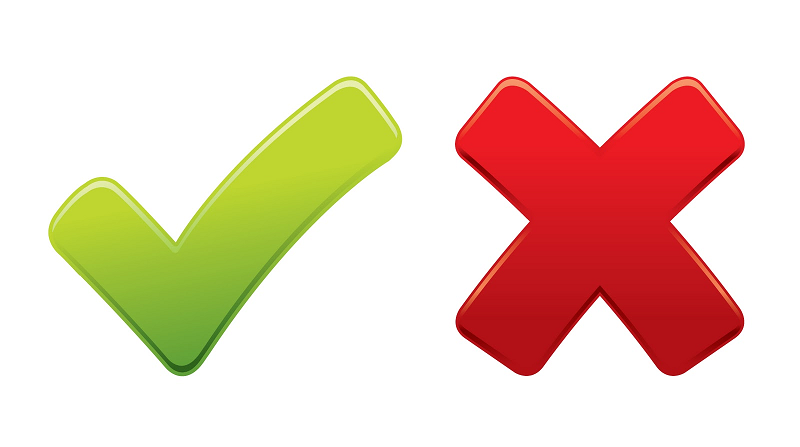|
Is there an answer between Yes and No?
 Short of "Will you marry me?" we find that a simple yes or no question rarely gets us to a place we need to be. Close-ended questions and one-word responses rarely get to the heart of the matter at hand. A car salesperson asks a person walking on the lot if they would like to test-drive the latest new sports car...they respond "yes!" But did this question get the salesman any further in the process of selling a car? Not necessarily; perhaps that customer has three children and really needs a minivan. It is a simple example, but we believe that these close-ended questions and one-word answers impact many areas of our personal and professional lives. Short of "Will you marry me?" we find that a simple yes or no question rarely gets us to a place we need to be. Close-ended questions and one-word responses rarely get to the heart of the matter at hand. A car salesperson asks a person walking on the lot if they would like to test-drive the latest new sports car...they respond "yes!" But did this question get the salesman any further in the process of selling a car? Not necessarily; perhaps that customer has three children and really needs a minivan. It is a simple example, but we believe that these close-ended questions and one-word answers impact many areas of our personal and professional lives.
Using Clarifying Questions
The boss poses a question, "Can you take on this new project and have it completed by Friday?" Do you have to say yes? Many people feel the pressure to always be the kind of employee that is reliable and willing to take on that one extra item. You may worry that your job will be in jeopardy if you don't agree, even if you know that this new project will send you over the edge of being able to deliver on other promised projects. While we intuitively know that doing quality work is just as important as the urgent need, we often only have a moment to decide our response to the initial question. We offer the idea that the answer to the question should not be a quick yes or no. How much better off would we be if we took a moment to consider the options in between yes or no?
 If your boss asks you for a report by the close of the business day, you may realize that it will likely not be read it until the following day, so you may wonder why the deadline is 5pm. A simple clarification question to your boss may be whether 9am the next day would work just as well for him or her? The key in the scenario is the clarification. You don't know why your boss needs the report and when they are going to take action on it. Your boss also may not be aware of your competing priorities. Saying something like, "Sure, I am happy to take on that project, but you asked for project XYZ to also be completed by Friday, which would you prefer take precedence?" Perhaps the simple reminder of all your other professional responsibilities may make your boss realize it is not a realistic deadline. If your boss asks you for a report by the close of the business day, you may realize that it will likely not be read it until the following day, so you may wonder why the deadline is 5pm. A simple clarification question to your boss may be whether 9am the next day would work just as well for him or her? The key in the scenario is the clarification. You don't know why your boss needs the report and when they are going to take action on it. Your boss also may not be aware of your competing priorities. Saying something like, "Sure, I am happy to take on that project, but you asked for project XYZ to also be completed by Friday, which would you prefer take precedence?" Perhaps the simple reminder of all your other professional responsibilities may make your boss realize it is not a realistic deadline.
When you engage someone in a conversation, they are less likely to associate negative connotations to the final outcome than if you were simply to say "no, I can't help you." So how do you engage in this conversation? By answering a question with a question. Only by asking the right next question will you get to the clarified options or needs.
Using Open-Ended Questions
Our conversations with clients focus on their learning how to ask the next question. Each conversation brings a new scenario, and we go into each one with the intention of modeling how replacing close-ended questions with open-ended questions is the key to better understanding. For example, when a client tells a series of horrible stories about their work environment, finally asking "should I just get a new job?" it is tempting for us to give a simple, "yes." But we know from both personal and professional experiences that when someone other than you answers your own question, the answer never seems as natural or clear.
Instead of answering their questions directly, we ask clarifying open-ended questions that allow the client to continue the process of discerning for themselves what it is that is important to them and what it is right for them to do. The process allows the client the necessary time and space to clarify their goals, identify their next possible actions, evaluate the potential of each of those actions, and then commit to the path that aligns most closely with their goals.
-
 Instead of asking, "Should I buy this car?" try asking, "Based on my personal and professional life, what kind of car do I need to buy?" Instead of asking, "Should I buy this car?" try asking, "Based on my personal and professional life, what kind of car do I need to buy?" - Rather than asking, "Should I find a new job?" ask, "How is my current job not helping me achieve my goals? Is it necessary to change jobs in order to meet those goals?"
Learning to replace close-ended questions with open-ended questions allows us to discern the right path.
Are simple yes or no answers getting you on your right path? How could you use clarifying questions and open-ended questions to make sure that everyone involved is clear about what is needed or desired and what can be accomplished in order for expectations to be successfully met?
Do you avoid tough conversations? As an extension of the ideas in this article, we invite you to put open-ended and clarifying questions into practice and better tackle tough conversations.
(back to top)
|